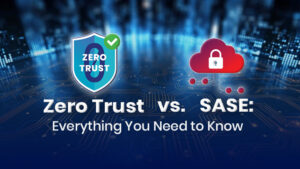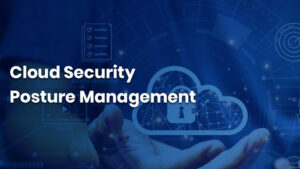
Zero Trust vs. SASE: Everything You Need to Know
Zero Trust vs. SASE: Everything You Need to Know Introduction As the cyber world continues to change, companies need to look beyond conventional security
🔥Premium Monthly Plan – Only $11.99!🔥Hurry! This exclusive deal won’t last long. 👉 Subscribe Now!

Zero Trust vs. SASE: Everything You Need to Know Introduction As the cyber world continues to change, companies need to look beyond conventional security

Cloud Security Posture Management (CSPM) Introduction In the era of digital transformation, organizations are moving to the cloud at an unprecedented pace. While the

How to Strengthen Security Using CIS Controls and Posture Analysis Introduction In the fast-paced and ever-evolving world of cybersecurity, defending digital infrastructure goes far
Table of Contents
As businesses increasingly migrate their data, applications, and infrastructure to the cloud, robust cloud security tools have become essential for protecting digital assets. Cloud security tools safeguard sensitive information, ensure compliance, and prevent cyber threats, helping organizations manage their cloud environments efficiently. These tools provide visibility into cloud resources, automate risk assessment, and enforce security policies, making them indispensable for modern IT security strategies.
In this blog, we’ll explore the top five cloud security tools revolutionizing the IT industry and discuss how to choose the right one for your business. If you’re looking to enhance your knowledge of cloud security tools and best practices, visit IPSpecialist for study guides, practice questions, and hands-on labs designed to help you master key cloud security concepts.
A cloud security tool is a specialized solution that provides visibility into an organization’s cloud assets, detects vulnerabilities, and mitigates potential threats. These tools automate security management, enforce compliance policies, and protect against unauthorized access or cyberattacks. By leveraging cloud security tools, businesses can enhance their security posture, prevent shadow IT, and respond to security incidents efficiently.
As businesses increasingly migrate to the cloud, ensuring the security of sensitive data, applications, and infrastructure is more critical than ever. Cyber threats, data breaches, and compliance violations pose significant risks to organizations that rely on cloud environments. Cloud security tools help protect against these threats by offering real-time monitoring, automated risk assessments, and policy enforcement. They ensure data integrity, prevent unauthorized access, and help businesses maintain regulatory compliance.
Security professionals in cloud security work with an array of tools and technologies in a variety of domains ranging from identity and threat to monitoring compliance and automation. The following are the key tools and technologies to be mastered:
1. Cloud Service Provider (CSP) Security Tools
Every major cloud vendor offers native security services with which professionals need to be familiar.
AWS Security Tools
Microsoft Azure Security Tools
Google Cloud Security Tools
2. Identity and Access Management (IAM) Tools
Identity and Access Management (IAM) is crucial to manage user permissions and limit unauthorized access within cloud environments.
Must-Know IAM Tools:
3. Cloud Security Monitoring & SIEM Tools
Cloud security event monitoring and responding to threats is important. SIEM tools gather and analyze security data throughout an organization’s cloud environment.
Top SIEM and Monitoring Tools:
4. Cloud Security Compliance and Governance Tools
Cloud security experts need to be compliant with industry standards including ISO 27001, NIST, PCI DSS, and GDPR.
Top Compliance and Governance Tools
5. Cloud Penetration Testing & Ethical Hacking Tools
Cloud penetration testing is critical to detect security vulnerabilities before they are targeted by attackers.
Best Cloud Penetration Testing Tools:
How to Make the Right Selection of Cloud Security Tools
Select appropriate cloud security tools to guard your data, infrastructure, and applications in the cloud. We provide a step-by-step tutorial on how you can make an educated choice:
1. Define Your Needs
Start by determining your organization’s security requirements. Those requirements are always extremely specific to the type of cloud environment you are using —public, private, or hybrid. Moreover, they vary with the type of data dealt with—sensitive or not—and the degree of compliance to regulatory requirements, such as represented by GDPR, HIPAA, or PCI-DSS. So attempt to realize what type of data you are dealing with, what types of threats can occur, and what defenses you must have.
2. Assess Core Features
Take into consideration cloud security capabilities such as encryption, IAM (identity and access management), threat detection, and incident response. Encryption will protect your data at rest and in transit. IAM will provide assurance that only authorized staff touch your resources. Threat detection solutions, such as IDS or IPS, will inspect your network traffic for malicious activity. Incident response solutions should automate and accelerate your response to security incidents.
3. Scalability and Integration
Cloud security tools must be scalable with your increasing business. With a multi-cloud or hybrid environment, the tools need to seamlessly integrate across multiple platforms and be easier to manage from one console. They should also seamlessly integrate with your existing infrastructure, for example, SIEM, and make your security operations simpler.
4. Compliance and Certifications
The security tool for the cloud has to meet all the industry standards and certifications. Standard frameworks for a security and compliance baseline include SOC 2, ISO 27001, and NIST. Utilizing tools with inherent compliance capabilities will facilitate easier adherence to those standards without complexity.
5. Ease of Use
When security tools introduce too much unnecessary complexity to operations, that is not desirable. Consider more user-friendly tool simplicity and ease of deployment with simple dashboards and reporting facilities. With cloud security platforms with intuitive interfaces, you can save time and lower your team’s learning curve.
6. Vendor Support
It counts to know what your vendor’s reputation is. Learn more about customer reports and industry case studies, and find vendors who have excellent customer support, regular updates, and good documentation so that you can fix problems right away.
The choice of adequate cloud security solutions should begin with the determination of the security requirements, technical landscape, and compliance needs. Who are the trusted vendors for making this choice? Scalability and seamless integration must be the priority for optimal security without impeding operations.
Cloud security tools play a crucial role in safeguarding sensitive data, applications, and infrastructure against cyber threats. This blog explored the top five categories of cloud security tools: CSP security tools, IAM solutions, SIEM & monitoring tools, compliance & governance tools, and penetration testing tools. Each category includes essential tools like AWS IAM, Azure Security Center, Splunk, Prisma Cloud, and Kali Linux, among others. Choosing the right cloud security solution involves evaluating an organization’s security requirements, assessing core features, ensuring scalability, meeting compliance standards, and considering ease of use. Investing in the right security tools helps organizations maintain a strong security posture and confidently navigate the evolving cloud landscape.
As cloud adoption continues to grow, implementing robust cloud security tools is essential for protecting digital assets, ensuring compliance, and mitigating cyber threats. The right security tools enhance visibility, automate risk assessments, and enforce security policies, making them indispensable for modern IT environments. By leveraging tools in areas such as IAM, security monitoring, compliance, and penetration testing, organizations can proactively defend against evolving cyber risks. Selecting the best cloud security solutions requires a careful assessment of security needs, scalability, compliance requirements, and vendor support. Strengthening cloud security is no longer optional—it’s a necessity for businesses aiming for a secure and resilient digital future.
1. Why are cloud security tools essential for businesses?
Cloud security tools protect sensitive data, prevent cyberattacks, ensure regulatory compliance, and provide visibility into cloud resources. They help businesses manage security risks efficiently and maintain a strong security posture.
2. How do we choose the right cloud security tool for my organization?
Start by identifying your business needs, technical environment, and compliance requirements. Evaluate the tool’s features, scalability, ease of use, integration capabilities, and vendor support to ensure it aligns with your security strategy.
3. Are paid cloud security tools better than open-source options?
Paid tools often offer advanced features, better support, and seamless integrations, making them suitable for larger businesses with complex needs. Open-source tools can be cost-effective but may require robust in-house expertise for effective implementation.
© 2025 All rights reserved | Privacy Policy | Terms and Conditions | Sitemap | Cookie Policy




